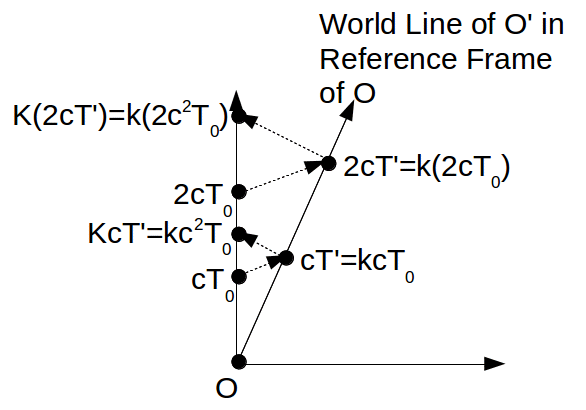Suppose an inertial observer O' is moving along the positive x axis of an inertial observer O with uniform velocity![]() At
At![]() the origins of both inertial frames coincide. The world line of O' in the reference frame of O is shown below. Each observer carries a clock which are synchronized at the moment the origins coincide.
the origins of both inertial frames coincide. The world line of O' in the reference frame of O is shown below. Each observer carries a clock which are synchronized at the moment the origins coincide.

The clock carried by observer O ticks at times![]() each tick results in a light signal being sent to O' which is received at times
each tick results in a light signal being sent to O' which is received at times![]() and instantly reflected back to O.
and instantly reflected back to O.
Because the world line of O' in the inertial frame O is a straight line, there will be a linear relationship between![]() and
and![]() and because it passes through the origin, the relation is of the form
and because it passes through the origin, the relation is of the form ![]()
![]() so that
so that![]() Similarly, when light signal is received in O' and reflected,
Similarly, when light signal is received in O' and reflected,
The signals are received at![]()
![]() so that
so that![]()
The signals take equal times to travel from O to O' and back, so the first signal is received by O' at a time in Os frame given and
and
Hence the speed of O' relative to O is
so![]()

Hence and the frequency
and the frequency![]() of light received by a moving observer is reduced by the factor
of light received by a moving observer is reduced by the factor
